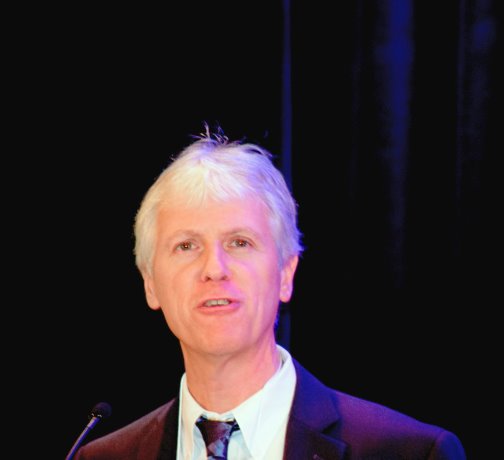The advent of automated vehicles (AVs) is coming faster than anyone seems to have anticipated and engineers, city planners, tech experts, government policymakers and others need to prepare now.
That was a major takeaway from the Transport Futures conference held in Toronto Nov. 18.
Transport Futures founder Martin Collier sourced professionals and academics from across the continent who told delegates that the commercial sector was already moving goods in AVs, that decisions had to be made immediately about V to X communication — automated vehicles communicating with "everything" including each other and infrastructure such as traffic lights — and that federal and provincial governments should allot resources for pilot projects and studies as they plan for a world that will be significantly disrupted by AVs.
Details of the Ontario government’s pilot projects for AVs were released Nov. 28. The province will contribute $2.95 million in funding to the Ontario Centres of Excellence Connected Vehicle/Automated Vehicle Program.
The theme of the Transport Futures conference was Mobility Pricing and Automated Vehicles. Collier argued that the two themes are inextricably linked. Policy-makers must address a host of issues that at this point are clouded by uncertainty, he said. Engineering and construction firms as well as public transportation agencies will need staff with new skill sets as two waves of AVs, semi-automated and fully automated, penetrate the market within time frames estimated at 2020-2035 and 2020-2050 respectively.
As for the transportation of goods by the AV sector, that’s already here, said panellist David King from Arizona State University and it will be more chaotic than with passenger vehicles.
He talked of drones and automated carts travelling through the air and on sidewalks delivering pizzas (New Zealand) and other goods (New York City).
At the same time as public and private sectors grapple with the foreseeable and unforeseeable consequences of the new waves of AVs, governments are also under pressure to institute transportation and pricing schemes that will change the existing "modal split," said Collier.
During a question and answer period one delegate said, "You can’t build your way out of congestion, you can only price your way out of congestion."
Road tolls, cited by panellist Adrian Bell of Activate Planning are capable of reducing traffic by 15 per cent in some circumstances, and could actually reduce congestion on a roadway by 30 or 40 per cent, said Collier. Combined with other measures that could change consumer travel behaviour, such as design changes that create safer roads, speed-reduction policies and planning to create denser communities there could be significant change orchestrated in the modal split.
The results would require a radical rethinking of infrastructure priorities, said Collier.
"For 100 years we have learned to build traditional infrastructure, but how do we build for automated vehicles?" said Collier in post-conference analysis.
"There will be narrow lanes and smaller cars, how do we build parking infrastructure — do we need to build parking infrastructure? Maybe there will be a shift and less parking than in the past."
He continued, "So what kind of skills do we need to build other kinds of infrastructure? Especially when Dave King was talking about drones, do they need landing pads, are they going to come on the sidewalk? Part of that is design but also, how do we build it?
"The other part is to be ready, because it could mean a difference in the types of jobs and the number of jobs in construction."
Retraining to ensure design, technical and data readiness will all be required by engineering and construction companies, said Collier.
At least safety will increase exponentially, given that human error is the major cause of accidents, noted the panellists.
But when AVs hit the roadways in significant numbers around 2020, Pino Porciello, of TrustPoint Innovation Technologies in Waterloo, Ont., asked what systems will guide them?
Vehicle-to-vehicle (V2V) interfacing will require co-operation between manufacturers. Philosopher Thomas Powers of the University of Delaware told the delegates that when customers buy a Ford, they will be getting Ford ethics built in.
V2V, Vehicle-to-infrastructure (V2I) and the combined V2X have been analyzed by Bern Grush of Grush Niles Strategic, author of the report Ontario Must Prepare for Vehicle Automation, referred to at the Transport Futures conference.
He has pointed out that in the short term there will have to be decisions made on the configuration of municipal roadways, bike lanes, sidewalks and traffic lights in addition to parking facilities, as mentioned by Collier.
As infrastructure planners work to integrate AVs and decide on what kinds of roadways and cities to build, trends are developing in opposite directions, the panellists agreed.
More users who cannot now operate a vehicle — seniors, the disabled — will become enabled. Automation will initially tend to lead to greater vehicle use, Grush has written, with more kilometres travelled, leading to greater congestion.
But as car sharing of AVs, robo-transit and roto-taxi systems become more mainstream, ownership of AVs ought to be reduced at some point in the future, Grush has said.

1/2
Martin Collier

2/2
David King






Recent Comments
comments for this post are closed